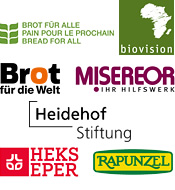About the IAASTD Report

The IAASTD process brought together agronomists and economists with biologists and chemists, as well as ecologists, meteorologists, anthropologists, botanists, medical scientists, geographers, historians and philosophers. It also included some holders of traditional and local knowledge from diverse cultural backgrounds. This unique diversity of participants enabled a holistic perspective on all essential ecological, economic, social and cultural aspects of agriculture. The report strives for a historic perspective, which looks back over the past 50 years, but also for a future perspective, looking forward (as much as is possible) 50 years. Besides the global report, the IAASTD consists of five separate regional reports, as well as one synthesis report and seven executive summaries for decision makers which were adopted sentence by sentence by an intergovernmental plenary.
A new direction
The IAASTD’s approach differed from a mere assessment of science and technology, that chooses certain solutions as a starting point and looks for the problems that could be solved with this technology. The IAASTD, by contrast, first identified key questions and main challenges in eleven public stakeholder consultations held in all continents in 2003, and then asked for available approaches to resolve them."The Bureau agreed that the scope of the assessment needed to go beyond the narrow confines of S&T and should encompass other types of relevant knowledge (e.g., knowledge held by agricultural producers, consumers and end users) and that it should also assess the role of institutions, organizations, governance, markets and trade. The IAASTD is a multidisciplinary and multistakeholder enterprise requiring the use and integration of information, tools and models from different knowledge paradigms including local and traditional knowledge.” (Global, p. IX-X) The fact that all disciplines, stakeholders and cultures were included and that thousands of external comments were considered for the final version of the report was both an unusual and refreshing process for the highly specialised academic and technical experts. The venture of giving the final say in the wording of both the questions and answers of the report (except the summaries) to independent experts was also a new experience for the governments and UN institutions.
Withdrawal of genetic engineering companies
In early 2008, shortly before the final draft of the IAASTD was presented, both the company Syngenta and CropLife International (the association of global agrochemical companies) withdrew from the process in a last-minute decision. At the final plenary session in April 2008, three governments (USA, Canada and Australia) did not sign the report, although they welcomed the assessment as a “valuable and important contribution”. In both cases, the main motive was the critical assessment of genetic engineering, and industrial agriculture as compared to small-scale farming and the role of global trade with agricultural commodities. These late withdrawals did not affect the quality of the IAASTD but complicated the dissemination and acceptance of the report in some government, economic and scientific circles in the years that followed.
Business as usual is not an option
Despite these adversities, the IAASTD is a promising starting point and provides the opportunity for a new view and holistic discussion on the past and future of food and agriculture. It presents a clear message: “Business as usual is not an option!” This was the title of the press release announcing the adoption of the IAASTD by 58 governments in April 2008 in Johannesburg. The title of the report itself is “Agriculture at a Crossroads”: A thorough and radical overhaul of present international and national agricultural policies is necessary to meet the enormous challenges of the 21st century.
We cannot respond to the challenges of the coming decades with the methods of the past. The IAASTD does not offer so-called “silver bullet” solutions; in fact it warns us against believing such solutions exist, be they of technological, economic or political nature. Instead, it provides a comprehensive and interdisciplinary analysis of the state of agriculture and a wide range of promising approaches. The determined implementation of these possible solutions and a combination of approaches could help us overcome the current crisis.






